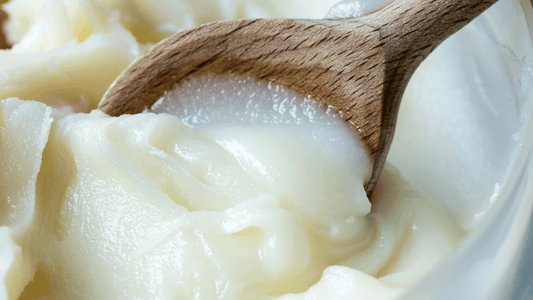
Is Beef Tallow Comedogenic?
Share
Unpacking the Question: Is Beef Tallow Comedogenic?
In the ever-evolving world of skincare, natural ingredients are making a strong comeback, and beef tallow is no exception. This traditional fat, once a staple in households for both cooking and skin care, has resurfaced as a trendy moisturizer. But with its rise in popularity comes a pressing question: Is beef tallow comedogenic? For those unfamiliar, “comedogenic” refers to a substance’s likelihood of clogging pores, potentially leading to acne or blackheads. In this in-depth blog post, we’ll explore the science, history, and practical implications of using beef tallow on your skin. If you’re intrigued by this natural skincare option, stick around—and don’t miss the premium offerings at Phat Skin Co..
What Does It Mean to Ask: Is Beef Tallow Comedogenic?
To answer whether beef tallow is comedogenic, we first need to understand what tallow is and how it interacts with skin. Beef tallow is rendered fat from cattle, purified to remove impurities, and often whipped into a creamy texture for skincare use. It’s rich in fatty acids like oleic, stearic, and palmitic acids, as well as vitamins A, D, E, and K—nutrients that mirror the composition of human sebum, the skin’s natural oil.
The comedogenicity scale, developed by dermatologists, rates ingredients from 0 (non-comedogenic) to 5 (highly comedogenic) based on their pore-clogging potential. Common culprits like coconut oil rank higher (around 4), while lighter oils like grapeseed sit at 1. So, where does beef tallow fall? The answer isn’t straightforward—it depends on factors like skin type, formulation, and application. Let’s dig deeper to find out if beef tallow is comedogenic for you.
The Science Behind Beef Tallow and Skin: Is Beef Tallow Comedogenic?
The fatty acid profile of beef tallow offers clues about its comedogenic potential. Oleic acid, which makes up about 40-50% of tallow, is known for its emollient properties but can be moderately comedogenic (rated around 2-3) for some people, especially those with oily or acne-prone skin. Stearic and palmitic acids, also present, are less likely to clog pores, often ranking closer to 1. This blend suggests that beef tallow is comedogenic to a mild degree—but not universally so.
Unlike synthetic occlusives like petrolatum (rated 0 but not nourishing), tallow penetrates the skin, delivering nutrients while reinforcing the lipid barrier. Research on fatty acids shows that oleic acid enhances permeability, which can be a double-edged sword: it hydrates deeply but may trap debris in prone-to-clogging pores. However, tallow’s similarity to sebum means it’s often well-tolerated, especially by dry or normal skin types. For a definitive answer to Is beef tallow comedogenic?, it’s less about the ingredient itself and more about individual skin chemistry.
At Phat Skin Co., their tallow-based products are crafted to maximize benefits while minimizing drawbacks, offering a balanced option for those curious about this natural moisturizer. Still, patch testing is key—more on that later.
How to Use Beef Tallow Without Worrying: Is Beef Tallow Comedogenic?
If you’re hesitant about whether beef tallow is comedogenic, the good news is that smart application can mitigate risks. Here’s how to incorporate it into your routine safely:
- Start Small: Apply a thin layer to a small area—like your forearm or jawline—to test for reactions. If no breakouts occur after 48 hours, you’re likely in the clear.
- Cleanse First: Use tallow on clean skin to avoid trapping dirt or oil in pores. A gentle, non-stripping cleanser sets the stage for success.
- Less Is More: A pea-sized amount is enough for your face. Overapplying any rich product, even one that’s debatably comedogenic, can overwhelm pores.
- Target Dry Areas: For acne-prone folks, use tallow on dry patches (like cheeks or hands) rather than oily zones (like the T-zone).
For those with sensitive or acne-prone skin, pairing tallow with a lightweight hydrator—like a mist—can dilute its richness. Beef tallow is comedogenic only in rare cases when misused or mismatched with skin type. Brands like Phat Skin Co. offer whipped tallow that’s easy to apply sparingly, reducing the risk of buildup.
Beyond the face, tallow shines as a body moisturizer or lip balm, where pore-clogging is less of a concern. Its versatility makes it a staple worth trying, regardless of the comedogenicity debate.
Debunking Myths Around Beef Tallow and Acne
The question Is beef tallow comedogenic? often comes with misconceptions that need addressing:
-
Myth 1: All Fats Clog Pores
Not true. Tallow’s nutrient profile and skin-like composition set it apart from heavier, more occlusive oils. It’s less about the fat itself and more about how your skin processes it. -
Myth 2: It’s Only for Dry Skin
While dry skin loves tallow’s hydration, oily skin can benefit too—especially if prone to barrier damage from harsh products. Moderation is key. -
Myth 3: It Causes Acne Instantly
Breakouts from tallow are rare and typically tied to overuse or pre-existing congestion. Studies suggest fatty acids like stearic acid may even reduce inflammation, countering acne triggers. -
Myth 4: It’s Too Heavy for Modern Skincare
Whipped tallow, as offered by Phat Skin Co., is light and absorbent, defying the “greasy” stereotype of raw fat.
The takeaway? Beef tallow is comedogenic for a small subset of users, but for most, it’s a nourishing ally. Skin type, application, and product quality dictate the outcome more than the ingredient alone.
Why Beef Tallow Deserves a Spot in Your Routine
Beyond the question of Is beef tallow comedogenic?, its broader benefits make it a compelling choice. It’s a sustainable byproduct, rich in vitamins, and free of the synthetic additives found in many creams. For those tired of watery lotions that evaporate fast, tallow offers lasting hydration. Its anti-inflammatory properties soothe irritation, while its fatty acids strengthen the skin barrier—ideal for everything from eczema to chapped lips.
Compared to trendy oils like argan or jojoba, tallow stands out for its historical roots and nutrient density. It’s not just a moisturizer; it’s a multi-tasker that simplifies your shelf. At Phat Skin Co., you’ll find tallow products designed with modern needs in mind—clean, effective, and user-friendly.
Final Thoughts
So, Is beef tallow comedogenic? The answer is nuanced: it can be on rare occasions for some, but it’s not inherently so. With its unique blend of fatty acids and vitamins, beef tallow offers a natural, effective alternative to conventional skincare. Whether you’ve got dry, sensitive, or even oily skin, a thoughtful approach—starting with a patch test and light application—can unlock its potential without the worry of clogged pores. Curious to try it for yourself? Head to Phat Skin Co. for top-tier tallow-based skincare that blends tradition with quality. Your skin might just find its new best friend.


